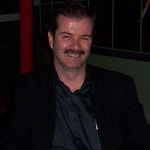Quantum Walks and Related Issues
A special issue of Entropy (ISSN 1099-4300). This special issue belongs to the section "Quantum Information".
Deadline for manuscript submissions: closed (15 December 2019) | Viewed by 20779
Special Issue Editors
Interests: quantum information; foundations of quantum mechanics; quantum cryptography; quantum metrology; history and philosophy of science; quantum optics; stochastic processes; genetics
Special Issues, Collections and Topics in MDPI journals
2 Department of Electrical and Computer Engineering and Photonics Center, Boston University, Boston, MA 02215, USA
Interests: quantum optics; quantum mechanics; quantum field theory; theoretical physics; optical engineering
Interests: quantum information; quantum communication and cryptography; quantum networking; quantum imaging; linear-optical quantum computing
Special Issues, Collections and Topics in MDPI journals
Special Issue Information
Dear Colleague,
Quantum walks have been systematically studied for over 20 years and display many distinct features that distinguish them from classical random walks. They have become of increasing interest over time due to their potential use in quantum information science, for example, in implementation of quantum algorithms and in conducting quantum simulations of other systems. In particular, multi-particle quantum walks have been shown to be capable of universal quantum computation.
Quantum walks have been implemented in many types of physical systems, ranging from nuclear magnetic resonance and trapped atoms to linear optics. Recent research has explored walks in higher dimensions, in complex networks, and with multiple walkers, including entangled walkers. Beyond walks in position space, quantum walks in more exotic variables such as optical orbital angular momentum have been implemented.
As quantum walks grow to touch on more areas of research, a fresh perspective on the current state of the field and of research in related areas is timely. The goal of this Special Issue is to provide a guide to the field and a sampling of recent developments. This issue covers all aspects of quantum walks and their applications with special emphasis on recent work on photonic walks.
Prof. Gregg JaegerDr. David S. Simon
Prof. Alexander Sergienko
Guest Editors
Manuscript Submission Information
Manuscripts should be submitted online at www.mdpi.com by registering and logging in to this website. Once you are registered, click here to go to the submission form. Manuscripts can be submitted until the deadline. All submissions that pass pre-check are peer-reviewed. Accepted papers will be published continuously in the journal (as soon as accepted) and will be listed together on the special issue website. Research articles, review articles as well as short communications are invited. For planned papers, a title and short abstract (about 100 words) can be sent to the Editorial Office for announcement on this website.
Submitted manuscripts should not have been published previously, nor be under consideration for publication elsewhere (except conference proceedings papers). All manuscripts are thoroughly refereed through a single-blind peer-review process. A guide for authors and other relevant information for submission of manuscripts is available on the Instructions for Authors page. Entropy is an international peer-reviewed open access monthly journal published by MDPI.
Please visit the Instructions for Authors page before submitting a manuscript. The Article Processing Charge (APC) for publication in this open access journal is 2600 CHF (Swiss Francs). Submitted papers should be well formatted and use good English. Authors may use MDPI's English editing service prior to publication or during author revisions.
Keywords
- quantum walks, photonic walks
- linear optical systems
- quantum information processing
- quantum simulation
- random walks
- quantum algorithms








